Fitness Of Your Competition Driving Pony
How Important is Fitness to Compete?
It is vital that your equine is at the correct level of fitness to enable it to compete comfortably, safely and to the best of its ability. If they are not at the correct level of fitness not only do you risk injury but they are not going to be able to reach their full potential.
Fitness can be divided into two categories.
- Health related fitness
- Skill related fitness
Health Related Fitness
- Cardiovascular endurance
- Muscular endurance
- Strength
- Power
- Flexibility
- Speed
Cardiovascular Endurance
It's easy to appreciate why these things are important. The horse must have enough cardiovascular fitness to complete each phase of competition without becoming excessively out of breath or fatigued.

Muscular Endurance & Strength
They must have the strength to pull the load required over the terrain required and to have the endurance to be able to continue this for the length of time required.
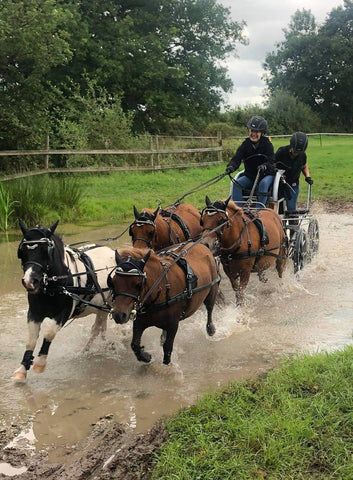
Power & Flexibility
We need our horses to be able to show flexibility and suppleness in dressage and cones as well as being able to combine this with power in the obstacles.

Speed
Our horses need speed combined with power & flexibility in the obstacles in order to perform at their very best.

Skill Related Fitness
- Agility
- Balance
- Power
Agility
This is vital for optimal performance in obstacles. The horse must be able to change direction at speed with minimal interruption to the way of going.

Balance
A balanced horse is a better athlete and better able to conduct the movements required in the dressage phase. A balanced horse is also better able to make turns in obstacles without compromising its fluidity.

Power
As discussed above, power is vital in allowing the horse to make turns quickly and push off easily to reduce delays in the turn.
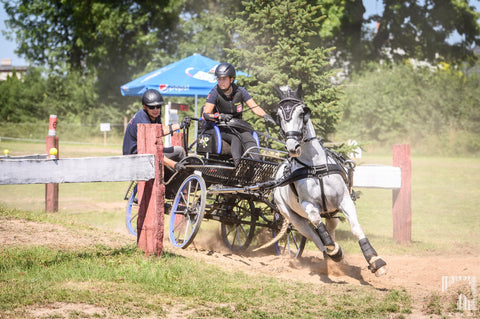
Fitness and Injury
Fitness plays a vital role in reducing the risk of injury in our sport. We have a wide variety of performance parameters within our sport due to the three separate phases we have. Whilst we do need more stamina and endurance on the marathon the fundamental requirements are the same for all three phases. We need a strong, flexible well-balanced athlete to perform the tasks required.
Different disciplines tend to show different injuries in sports horses, and we are fortunate that our sport offers the horse a variety of tasks thus reducing some of the risks seen in single phase sports.
Main Sources of Injury
- Inconsistent training
- Lack of rest/recovery
- Changes to workload
- Rapid increase in workload
- Lack of variety in training
- Individual weaknesses/previous injuries
So, what can we do?
To help to reduce the risk of injury you need to prepare your horse for the job it will be required to do. This means it needs to have time to be gradually brought to the appropriate level of aerobic fitness. It needs to have exercises to improve suppleness and strength and it needs to have appropriate management during downtime and recovery.
Warm Up and Cool Down
Warm up is vital to ensure that the horse has an opportunity to raise its heart rate which increases circulation and increases oxygen flow to the muscles. Whilst the time required can vary depending on ground conditions, whether the horse has come from a stable or a field and the level of fitness of the horse, it would be good practice to walk for at least 10 minutes before moving on. During warm up encourage the horse to stretch, make transitions and change rein.

Cool down is important to reduce the heart rate, drawing lactic acid away from the muscles to reduce inflammation. It is also important for the horse's mind to be able to return to a state of calm. The type of cool down depends on what the horse has been doing and how hard it has worked but you should gradually come down the paces until you are walking on a loose rein for at least 10 minutes.

How Do We Go About Getting Our Horses Fit?
There are numerous factors affecting the way you get your horse fit. Some influences might be
- Has the horse ever been very fit in the past? A horse that has already achieved a high level of fitness is usually easier to get back to that level
- Has the horse got any past injuries or weaknesses that you need to consider? This may affect the type of training that you do
- What facilities do you have at your disposal?
- The temperament and age of the horse
- What the end game is
We can give a rough guide but as shown above there are a lot of factors to consider so always monitor and adapt! Don't move on to another phase until you are satisfied that the horse is coping with the current phase.
Phase One - Slow & Steady (1-3weeks)
Week One
Walking on a good surface predominantly on the level and without turns. Road work may be ideal for this if your circumstances allow. Start at around 20minutes and gradually begin to increase
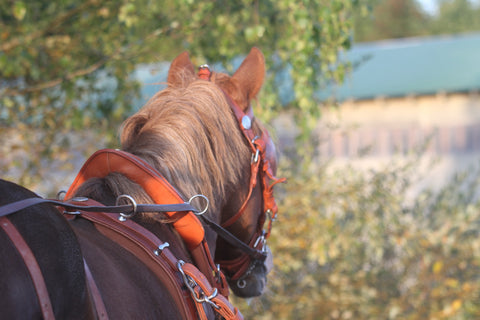
Week Two
Increasing week one from around 30 minutes to an hour

Week Three
Begin to introduce some inclines and vary the surface where possible so some work on grass, some on roads, forestry tracks and so on
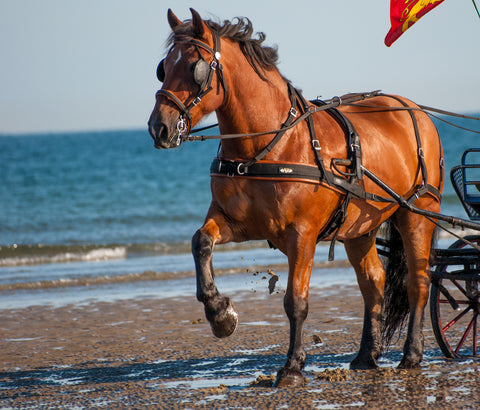
Phase Two - Strength & Stamina (4-5weeks)
Week Four
You can begin introducing a few schooling sessions and some trot work in short intervals. Continue driving out and don't do too much schooling
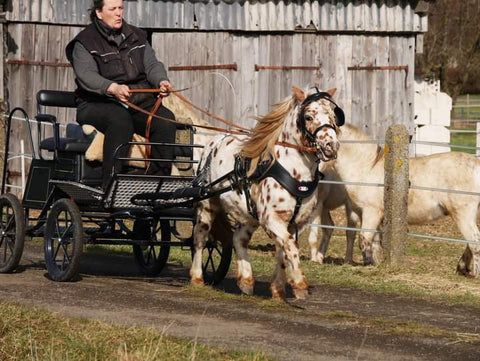
Week Five
Begin introducing more turns during schooling sessions and if you do in hand work you can begin some pole work.

Phase Three - Schooling & Speed (6-9weeks)
Week 6 -8
You can now drive out for longer, remain in trot for longer and increase schooling. If you feel safe to do so and have an area to do it, you can introduce canter work now. You can include some obstacle and cones training. Gradually increase over the three weeks.
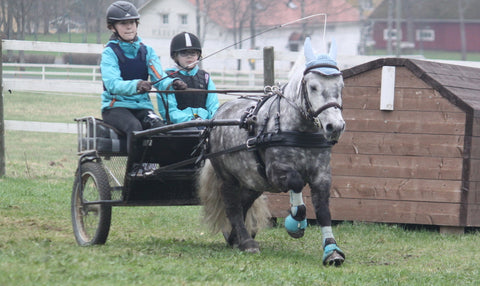
Week 9
Continue with your drive outs and schooling sessions and your horse should now be at an adequate fitness level to begin competing.
Horse Care
Throughout training you must monitor your horse and check for any signs of stress or injury. You need to feed appropriately, and you will probably have to increase feed or alter the type of feed as you progress through the programme. You may also have to clip the horse to ensure it doesn't sweat excessively, particularly if you are starting early in the season and your horse still has a winter coat. Make sure you sponge off any sweaty areas and groom thoroughly. You should also be supplementing with electrolytes any time you expect the horse to sweat.





Leave a comment